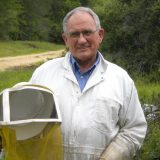German winemakers are slowly turning away from the sweet style. I find myself spending a lot of time in the wine corner at Formaggio correcting misconceptions about wine—or perhaps I should say out-of-date-conceptions—meaning things that may have once been true of a certain category of wine that are no longer so.
Some of these ideas constitute part of what I like to call the Gospel of Wine—the collection of things that people think they know about wine and never think to question or inquire into.
One of these articles of faith is that German white wines are uniformly and unvaryingly sweet. It’s one of the reasons that in many wine shops, the German section goes begging for attention. If you’re not in the market for a sweet wine, then why bother to have a look?
In a recent radio segment I asked host Christopher Kimball what percentage of German white wine is actually sweet. 100%? 90%? 75%?
The surprising answer is just a little better than 60%. This leaves a lot of room for dry or nearly dry German white wine—the kind that is typically designated trocken (“dry”) on the label. And this being the case, shouldn’t we be spending a bit more time enjoying German Riesling, Sylvaner, Scheurebe, and Gewurztraminer than we are?
Experienced tasters know that the lab analysis of sweetness and our perception of it don’t necessarily align. For example, high acidity tends to mask the presence of sugar. In a parallel phenomenon, the presence of sugar tends to mute the perception of acidity. Since many of the finest German wines are produced at latitudes as high as 50 degrees (in North America this would be the equivalent of Winnipeg, Manitoba), the acidity can be very high indeed—so high that it might not be tolerable. In these conditions, it made sense to leave a little sugar unfermented. Historically, this is how what we think of as the classic German style of white wine emerged. A bit of sweetness simply made a more palatable, table-friendly wine.
Another aspect of this is the difficulty yeasts have in operating in cold temperatures. In these high northern latitudes, a fermentation may chug along satisfactorily into the late fall. As temperatures fall, their progress stalls well before all available sugars have been consumed. If the wine is bottled early in the spring, these fermentations don’t have the opportunity to resume and run their course. So it may have been that a preference for somewhat sweet wines was established relatively early in Germany because under prevailing conditions, this is just how wine turned out.
In theory, when yeasts have consumed 100% of the available sugars, the resulting wine will be perfectly dry. In practice, no wine achieves absolute zero residual sugar, even though it might taste that way. Concentrations of sugar need to exceed 2 or 3 grams per liter (about 2 tenths of one percent by volume) to be perceived by an experienced taster; the threshold for the casual consumer may be around 4 or 5 grams.
How dry, then, is dry? According to German wine law, a dry (trocken) white wine is one with a maximum residual sugar concentration of 9g/L or a whisker less than 1% by volume. You can see that even at this maximum level, we are still above the threshold for perceptible sweetness—but barely.
We might ask what is nudging German winemaking toward a drier style of wine. Possible factors include:
- Leadership from a small group of elite and influential estates that has produced a kind of domino effect.
- The thinking on the part of some that serious table wine ought to be dry wine—as it is pretty much everywhere else in the world.
- The idea that dry wines pair more readily with more kinds of foods, ingredients, and dishes.
- The notion that a dry wine provides a more transparent view into site character (terroir).
- Consumer approval: drier wines are now the preferred style among German wine drinkers.
- Global warming: as temperatures rise, fruit can ripen more fully, mitigating the need to offset high acidity with sugar.
To establish a baseline for Chris to judge the “how dry is dry” question, I first poured a control wine, a classic sweet-style Mosel riesling: the 2011 J.J. Prum Wehlener Sonnenuhr Spatlese Riesling. A reasonable guess for its residual sugar content might be on the plus side of 50 grams per liter.
Without making the comparison on a side by side basis, it’s hard to appreciate just how dramatically sweet and dry styles differ. The four wines designated trocken that followed were:
- 2014 Donnhoff Riesling Trocken Nahe
- 2015 Keller Riesling Trocken Rheinhessen
- 2013 Weingut Jakob Schneider Niederhauser Hermannshohle Riesling Trocken Nahe
- 2013 Von Winning Forster Ungeheuer GG Pfalz
Depending on how you look at it, it’s either maddening or delightful that sweet and dry styles hardly exhaust the possibilities for German white wines. It’s really less of a binary choice than a spectrum of possibilities. We haven’t even mentioned the ‘tween categories of halbtrocken (half-dry) and feinherb (“fine-bitter”) that involve sugar levels of between 9 and about 20 grams per liter.
I may have largely given up on the notion that “I’ll have a nice glass of Mosel Riesling trocken, please” would ever be as common a request at my neighborhood wine bar as “I’ll have a nice glass of chardonnay”… but I can dream, can’t I?
Got a question about wine? Email me.


